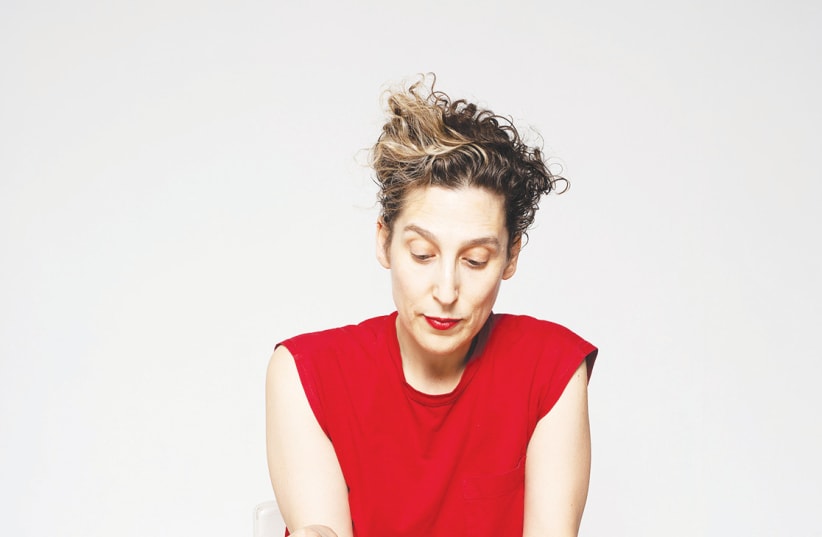According to Ofri Cnaani, the most dramatic places in a museum are its storage rooms.
There, select visitors can see the true state of the works of art without the embellishments of restorations, flattering lighting and prime juxtaposition in space. Without the pomp of curation, away from the public eye, the artworks lead a secret life.
For Cnaani, who has spent countless hours wandering and working in museums the world over, these glimpses are thrilling and have inspired her newest performance work, Mother Report, Father Report, which will premiere this weekend as part of the ongoing Imagine a Museum exhibition.
The six-week exhibition/event is curated by Ruth Direktor at the Tel Aviv Museum of Art and boasts a roster of live performances throughout the various galleries of the museum.
“In 2022,” says Cnaani, “I was an artist-in-residence at the TAMA. I spend a lot of time in museums. They are my medium. During my residency, I invited many people, scholars and thinkers to walk with me around the museum and have conversations about their field of knowledge and how they can think about this knowledge within the framework of the museum.


“One walk was with Galit Efrat, who also thinks about the hidden spaces of the museum. We saw the restoration room; the lights were on but the doors were locked. We asked to come in. There was a big piece in there. That was when we met the crack,” she says.
“One walk was with Galit Efrat, who also thinks about the hidden spaces of the museum. We saw the restoration room; the lights were on but the doors were locked. We asked to come in. There was a big piece in there. That was when we met the crack.”
Ofri Cnaani
Cnaani, 47, speaks with great enthusiasm and wit about her work. On the morning of our conversation, she is preparing to travel to Porto to present a solo show titled Leaking Lands, the artistic results of her Ph.D. research.
This event is commonplace for Cnaani, who regularly travels to present her work abroad. She recently moved back to Israel after 17 years spent in New York, then London. Her creations, be they time-based media, performances or installations, have been exhibited in some of the world’s most prestigious spaces, including Tate Britain and the Metropolitan Museum of Art. Cnaani was a faculty member at the School of Visual Art in New York City and at the Visual Cultures Department, Goldsmiths, University of London. She currently teaches in Vienna, Austria.
What is the crack?
The crack she refers to is part of a story that captures a specific moment in Israel’s history. In 1973, not long before the Yom Kippur War, TAMA approached American-Jewish artist George Segal to create a commissioned work. “He wrote back that the work would deal with the Binding of Isaac,” explains Cnaani. “They were horrified to hear it. He insisted and it happened.”
SEGAL IS best known for his life-size plaster casts. It was Segal’s practice to enlist normal people, often his friends, to pose for him. During subsequent visits to Israel to create the commission, he called on his friend Menashe Kadishman and his fourteen-year-old son Ben to sit for him. “That’s how this piece came to life. It’s all made of white plaster. There’s a big piece of boulder ground that the scene is taking place upon. Because the surface was so big, just after it was shown, they sawed it in half for storage purposes. There’s one big piece and then an extra. Each time the piece has been shown since they would bring it up and they would close the crack with plaster so you wouldn’t see it,” she says.
As Cnaani and Efrat continued their tour of the museum, their conversation kept returning to the Segal piece and the crack. “We had a big talk about conservation. Galit kept using the term “mother report,” which I later learned is a term used in museums for a condition report. It struck me as so beautiful when thinking about care and mothering regarding the condition of pieces in storage. I immediately connected it to the Binding of Isaac, which is a father report.”
The resulting creation tracks two stories, that of Segal’s sculpture and Cnaani’s personal dealings with chasms. “The second story is a personal story about changing my family situation and cuts with mothers and fathers and daughters and sons, and about living around the breaking line,” she says.
In the performance, Cnaani is joined by dancers Keren Shemi and Tamir Friedrich, as well as three additional participants who assist in manipulating the pieces in the space. “The piece itself is involving those two heavy very massive pieces of the sculpture on wooden working tables with wheels that are very simple. It looks like a workshop. Keren, Tamir and the other participants use the body as a measuring device inside the crack. There are choreographic sentences that measure the space between the bodies. Another element is my text.”
All of this will come together in 30 minutes of movement, sound, objects and text, which Cnaani made wove together with the help of dramaturg Nitzan Cohen. “It’s a report about things that fell apart. It’s about choreographing the words between different stories. It’s about living in the afterness. About what happens when things are no longer being held together, whether it’s a museum or a family.”
Mother Report, Father Report will be performed five times at TAMA from January 26 through January 30. For more information, visit www.tamuseum.org.il.












